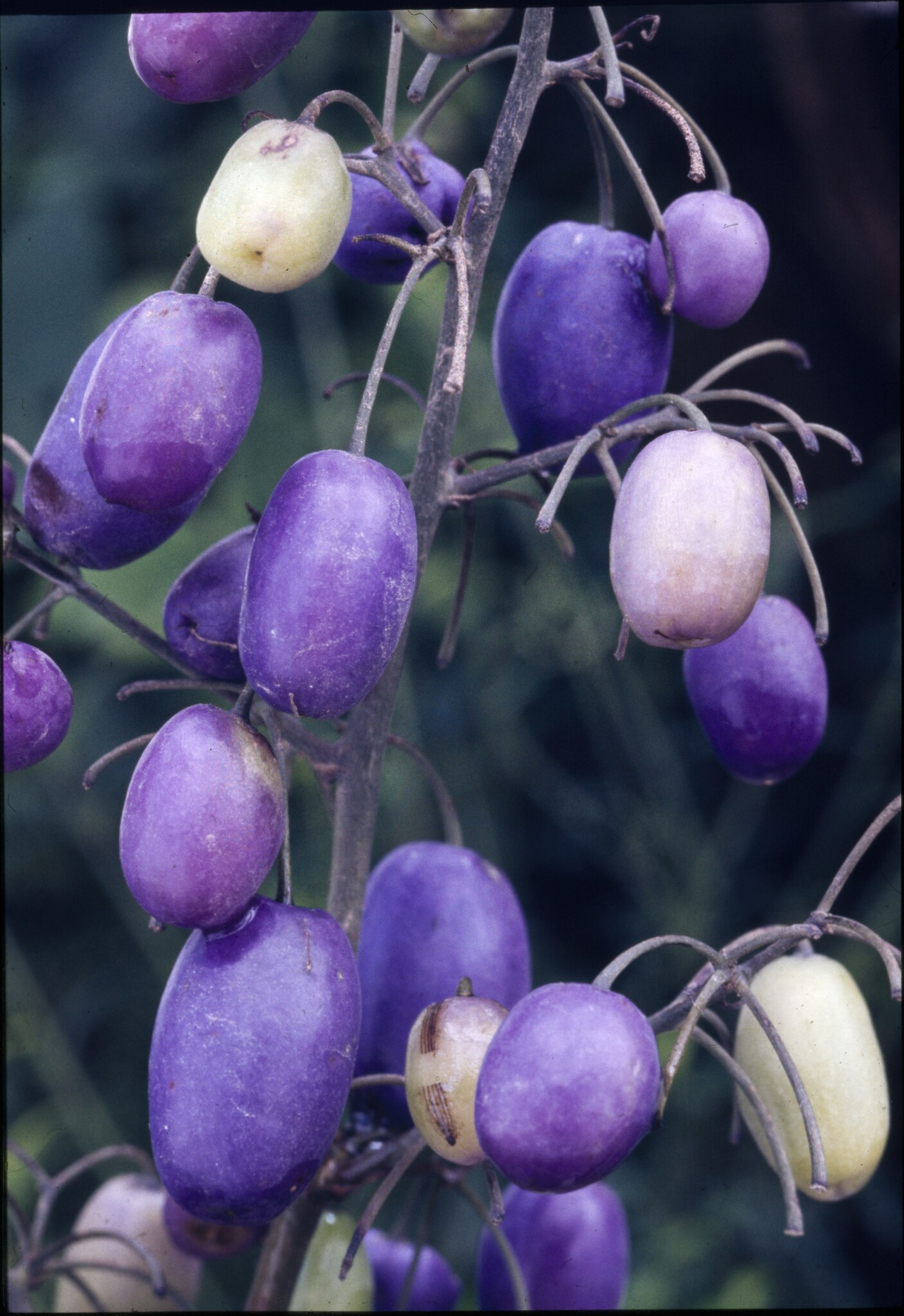
Greek Diana – goddess of the hunt, ella – small; the first specimen of this genus was labelled ‘Diana’ by the collector.
Perennial, tufted rhizomatous herb. Stems short, erect, unbranched. Leaves several, 2-ranked, broadly linear-lanceolate, leaf bases flattened. Flowers lasting only one day, spreading, radially symmetrical, not twisting after flowering, stalked, individual flower stalks articulated. Inflorescence a terminal cymose panicle. Tepals 3+3, free. Stamens 6, free, with conspicuous swollen appendages below the anthers. Ovary superior. Fruit a berry. Seeds ovoid, black, without arils.
Greek Diana - goddess of the hunt, ella - small; the first specimen of this genus was labelled 'Diana' by the collector.
At least 9 species have been cultivated in southern Australia for the attractive leafy clumps and blue flower clusters, generally at home in full sun on a wide range of soils.
About 35 species from Australia, New Zealand, SE Asia and extending to Africa and the Pacific. About 20 very variable species native, most endemic.
Tepals not twisting after flowering; stamens with swollen appendages; bright blue berries.
Carr & Horsfall (1995).
Source: (2005). Hemerocallidaceae. In: . Horticultural Flora of South-eastern Australia. Volume 5. Flowering plants. Monocotyledons. The identification of garden and cultivated plants. University of New South Wales Press.
